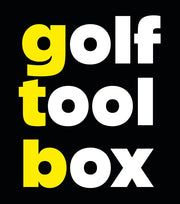Choosing the right putter – What types of putters are there and what should you look out for?
In golf, the putter often determines victory or defeat. But what types of putters are there? What's the difference between a mallet and a blade putter? And what are counterbalance putters? In this article, you'll learn everything you need to know to find the perfect putter for your game.
1. The different types of putters
Blade Putter – The classic for purists
Blade putters are slim and simple in design. They are particularly suitable for golfers with an arcuate (curved) putting stroke. These putters offer more feel but require precise technique. Tour pros, in particular, swear by this traditional design.
Mallet putter – more forgiveness and stability
Mallet putters have a wider head shape and often a sophisticated weight design to increase the MOI (moment of inertia). This provides more stability and forgiveness on less-than-ideal putts. Players with a straight or slightly curved putting stroke benefit from this design.
Half-Mallet Putter – The Middle Way
Half-mallet putters combine the characteristics of blade and mallet putters. They offer some forgiveness while remaining compact enough for players seeking more control.
2. Weight distribution and counterbalance putter
Standard weight vs. counterbalance
A standard putter has an average head weight of 330-370 grams. But what happens when more weight is added to the grip area? That's precisely the principle of a counterbalance putter .
What is a counterbalance putter?
Counterbalance putters have a heavier overall weight, with the weight deliberately distributed between the grip area and the butt of the shaft. This shifts the balance point upward, resulting in a smoother and more controlled stroke. Players with shaky hands or an unsteady putting stroke particularly benefit from this technology.
Advantages of counterbalance putters:
- More stability in the putting stroke
- Reduced wrist movements
- Ideal for players with nervous stroke or yips
- Works especially well on fast greens
3. Face-balanced or toe-hang – which suits your stroke?
Not every putter is suitable for every swing path. Here are the key differences:
-
Face-Balanced Putter: Perfect for players with a straight-back, straight-through stroke. The center of gravity is directly behind the face, keeping the putter stable.
- Toe-Hang Putters: These putters have a downward slope, which is ideal for players with an arced stroke. They help close the clubface better at impact.
4. Shaft length and grip – what role do they play?
A putter that's too short or too long can significantly affect your stance and putting feel. Standard putter lengths range from 33 to 35 inches. A longer putter can relax your upper body, while a shorter putter offers more control.
For the handle you can choose between:
- Thick handles (less hand movement, more stability)
- Thin grips (more feel, but less forgiveness)
Conclusion: Which putter is right for you?
Choosing the right putter depends on your swing style, feel, and preferences. Important questions to ask yourself:
- Do you have a straight or arc-shaped stroke?
- Do you need more forgiveness or more control?
- Do you find it easier to handle a heavy or light putter?
Whether blade, mallet, or counterbalance, a well-chosen putter can significantly improve your putting game. Test out different models and find out which putter suits you best!
Are you ready to take your putting to the next level? Then test out different putter types and find your ideal model!
